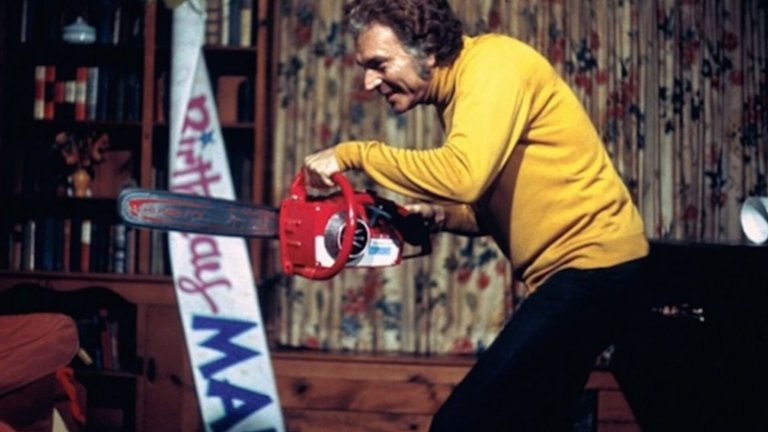
The year 1972 marked a time of transition, offering an opportunity for filmmakers to push the envelope and explore the boundaries of what was acceptable and what was not. Amidst the crumbling old order and the yet-to-be-established new one, filmmakers in early 1970s America exploited this void, creating works that would go on to gain cult status, ignite controversies, and secure their place in cinematic history. One such filmmaker was Wes Craven, whose directorial debut, The Last House on the Left, proved to be one of the most infamous and contentious films of its time, setting the stage for the "rape and revenge" exploitation genre.
The Last House on the Left serves as a loose remake of Ingmar Bergman’s 1960 period drama The Virgin Spring. Craven, who also wrote the screenplay, changed the setting from medieval Sweden to contemporary America. The story begins with Mari Collingwood (portrayed by Susan Peabody), the daughter of a respected physician, Dr. John Collingwood (played by Richard Towers, credited as “Gaylord St. James”), and his wife Estelle (Eleanor Shaws, credited as “Cynthia Carr”). Mari is excited to celebrate her seventeenth birthday by attending a concert in New York City with her friend Phyllis Stone (Lucy Grantham), despite her parents’ reservations about Phyllis's background from “wrong side of the track”. The girls’ quest for marijuana leads them into a deadly encounter with Krug Stillo (played by David A. Hess) and Fred “Weasel” Podowski (played by Fred Lincoln), two murdering psychopaths who had escaped prison. Alongside Krug’s depraved girlfriend Sadie (played Jeramie Rain) and his drug-addicted son Junior (played Marc Sheffler), they take the girls captive, drive them to woods and subject them to horrific humiliation, torture and rape before ultimately murdering them. In a grim twist of fate, after their car breaks down, Krug and his confederates, posing as travelling businessmen, ends as guests in Collingwoods’ home. There Estelle spots Mari’s belongings among them and, realising what has happened to her daughter, tells her husband who would exact terrible revenge on Mari’s murderers.
In the decades that followed, numerous articles and studies claimed that The Last House on the Left was a commentary on the inherently violent nature of American society, as well as an expression of confusion and anxiety following the realization that the optimism of the 1960s and the Summer of Love had given way to civil disorder, the Manson murders, rising crime, and the never-ending nightmare of the Vietnam War.
While it isn’t beyond reason to speculate that Craven drew at least some inspiration from contemporary events in America, it is more likely that Craven and his producer, Sean S. Cunningham, had no idea what they were doing when they made the film. Cunningham's previous films were ultra-cheap sexploitation comedies, and The Last House on the Left was originally conceived as a hardcore pornographic film. During production, Craven and Cunningham abandoned this idea, leaving only a few slightly exploitative scenes of nudity.
The film's most significant source of controversy lies in its depiction of violence. Although not as graphic as some later exploitation films from the 1970s, the violence portrayed is deeply disturbing. It includes disembowelment and mutilations during the initial murders, alongside Collingwood's brutal revenge against his daughter's killers. This unsettling portrayal contributed to a self-replicating cycle of hype surrounding the film; its infamous trailer urged audiences to keep repeating "it's only a movie" while watching.
Despite its disturbing content, The Last House on the Left is, at least from today’s perspective, often difficult to take seriously. Much of the reason for this lies in Craven's decision to lighten the bleak content with a strangely uplifting music soundtrack that plays at inopportune moments or the comical subplot involving an inept sheriff and his deputy, which looks like it was edited from a completely different film. The result is an experience that is almost surreal.
On a more positive note, Craven demonstrates skilful direction in several key scenes, and despite many cast members being unknown at the time of filming, their performances are commendable. David A. Hess, a musician who also co-wrote some of the soundtrack, gives an intense performance as the sinister psychopath Krug. Fred Lincoln, who plays Weasel, would later become a prominent pornographic actor and director, while Martin Kove, who plays the deputy, would go on to become a big star in subsequent years.
The film was successful at the box office, despite unenthusiastic reviews, controversies, and issues with censorship. Many projections cut scenes and material they considered too inappropriate, leading to the belief that the original version is lost and that the current version represents the one that most censors found least objectionable.
Craven spent several years trying to distance himself from the shadow of his first film before 1977 film The Hills Have Eyes, which firmly established him as a specialist in the horror genre. The Last House on the Left has since been remade in 2009, directed by Dennis Iliadis, with a larger budget and more polished technical and stylistic aspects. However, the remake fared much worse with critics and commercially compared to the original.
The Last House on the Left stands as both a product of its time and an enduring piece of cinema that continues to provoke discussion about violence in film and society at large. Through its raw portrayal of human depravity juxtaposed with moments of dark humour and surrealism, Wes Craven's debut remains an unsettling yet significant entry in horror film history.
RATING: 5/10 (++)
Blog in Croatian https://draxblog.com
Blog in English https://draxreview.wordpress.com/
InLeo blog https://inleo.io/@drax.leo
Hiveonboard: https://hiveonboard.com?ref=drax
Rising Star game: https://www.risingstargame.com?referrer=drax
1Inch: https://1inch.exchange/#/r/0x83823d8CCB74F828148258BB4457642124b1328e
BTC donations: 1EWxiMiP6iiG9rger3NuUSd6HByaxQWafG
ETH donations: 0xB305F144323b99e6f8b1d66f5D7DE78B498C32A7
BCH donations: qpvxw0jax79lhmvlgcldkzpqanf03r9cjv8y6gtmk9
Posted Using InLeo Alpha